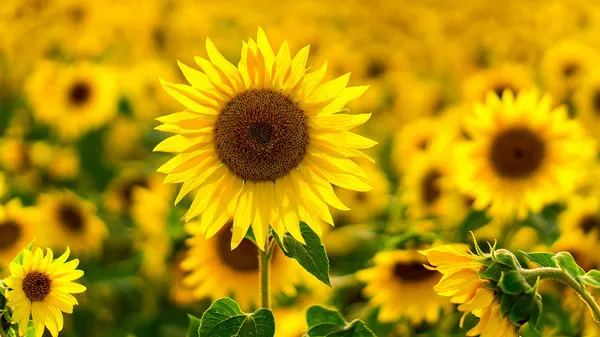Sunflowers, with their brilliant yellow petals and towering stalks, are a favorite among gardeners and nature enthusiasts. While the striking blooms are undoubtedly the stars of these plants, the sunflower stalks also hold significant value, often overlooked. Instead of discarding them once the flowers have withered, sunflower stalks can be repurposed in various creative and practical ways.
Garden Mulch with Sunflower Stalks
Sunflower stalks can be shredded or chopped into small pieces and used as garden mulch. This organic mulch has several benefits for your garden. It helps retain moisture, suppress weeds, and regulate soil temperature, ensuring your plants receive the optimal growing conditions. Sunflower stalk mulch also decomposes over time, enriching the soil with valuable organic matter and nutrients.
Support Structures for Future Sunflowers
One of the most sustainable and symbolic uses of sunflower stalks is to use them as support structures for new sunflower plants. By tying the stalks together to form teepees or trellises, you can create a stable framework for young sunflowers to grow against. This not only reduces the need for additional materials but also allows you to keep the sunflower theme alive in your garden.
DIY Garden Decor and Art
Sunflower stalks can serve as a source of inspiration for various DIY garden decor and art projects. Consider crafting decorative fences, sculptures, or even wreaths using the stalks. Their unique texture and natural charm can add a touch of rustic elegance to your outdoor space.
Composting Sunflower Stalks
Composting is an eco-friendly approach to managing sunflower stalks. These sturdy plant remnants can be chopped into smaller pieces to expedite decomposition. As they break down, they contribute organic matter and nutrients to the compost pile, enriching the compost with valuable elements that can be used to fertilize your garden.
Natural Garden Markers
Sunflower stalks can be cut into smaller pieces and repurposed as garden markers. Use them to label your plants or rows, adding a touch of rustic charm to your garden beds. With a little creativity and paint, you can make these markers both functional and aesthetically pleasing.
Birdhouses and Bird Feeders
Sunflower stalks can be creatively transformed into birdhouses and bird feeders. The hollow nature of the stalks provides a natural structure for nesting birds, while the seeds that remain can serve as a convenient source of food for them. These DIY projects can attract more wildlife to your garden and provide a haven for local birds.
Sunflower Stalk Crafts for Kids
Sunflower stalks are excellent materials for engaging kids in creative and educational activities. Encourage them to paint, decorate, and assemble sunflower stalk crafts. These projects can foster an appreciation for nature and hands-on learning while creating beautiful keepsakes.
Natural Trellises for Climbing Plants
Sunflower stalks’ robust nature makes them ideal natural trellises for climbing plants like beans, peas, or flowering vines. Simply position the stalks in your garden and let the climbing plants weave their way up. This not only saves you the trouble of installing trellises but also creates a visually striking and functional garden feature.
Sustainable Building Material
Sunflower stalks, when properly prepared, can serve as a sustainable building material. With their natural strength and durability, they have been used in some regions for constructing small structures, such as fences, arbors, and garden sheds. Their environmentally friendly qualities make them an attractive option for those looking to reduce their carbon footprint.
Sunflower Biomass for Energy Production
On a larger scale, sunflower stalks can be utilized for biomass energy production. Biomass is a renewable energy source that can be converted into heat, electricity, or biofuels. Sunflower stalks, being rich in cellulose, are a potential feedstock for biomass energy. This can contribute to more sustainable and cleaner energy production.
Educational and Research Purposes
Sunflower stalks also hold educational value. They can be used for scientific experiments, school projects, or nature studies. Their unique structure and composition can help students and researchers understand plant anatomy, growth patterns, and ecological interactions.
Sunflower Crafts and Decor for Special Occasions
If you’re planning a special event, sunflower stalks can be a creative and cost-effective addition to your decor. Whether it’s a wedding, birthday party, or any other celebration, sunflower stalks can be used to create centerpieces, flower arrangements, and other decorative elements.
Conclusion
Sunflowers are beloved for their cheerful blooms, but their stalks are equally valuable in a multitude of ways. From garden mulch to support structures, DIY projects, composting, and even sustainable energy production, sunflower stalks offer a wealth of possibilities for the environmentally conscious and creative individual. By recognizing the potential of these plant remnants, we can reduce waste, enhance our gardens, and infuse our lives with the enduring beauty of sunflowers long after their petals have faded. Embrace the versatility of sunflower stalks and let your imagination run wild as you explore the countless opportunities they offer.


